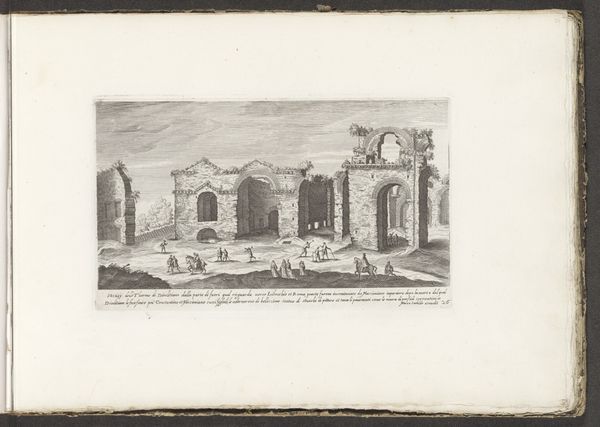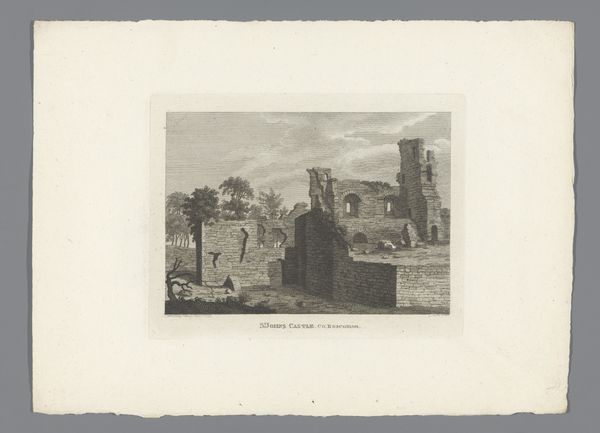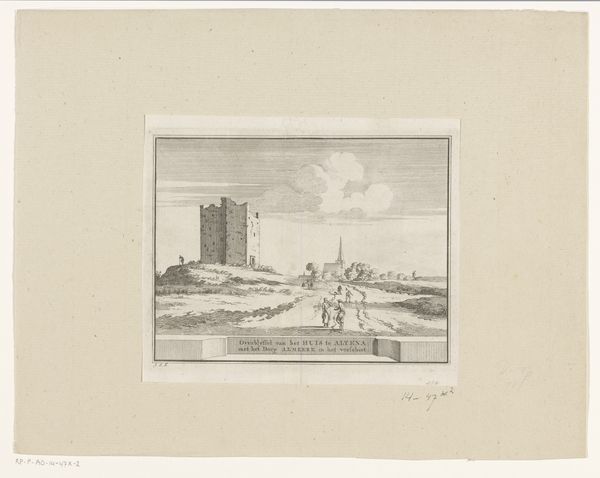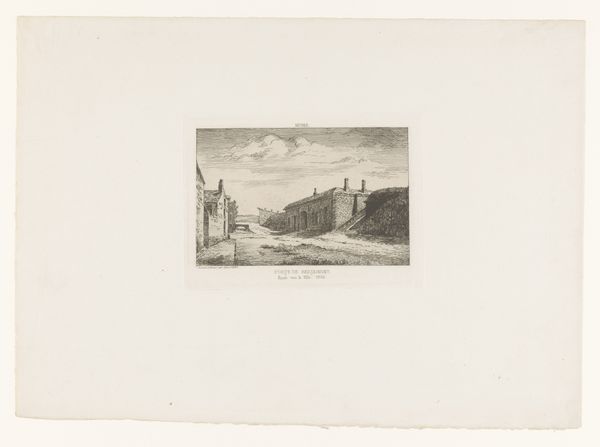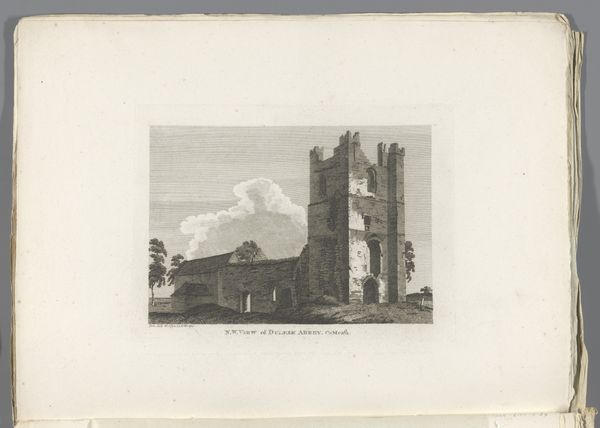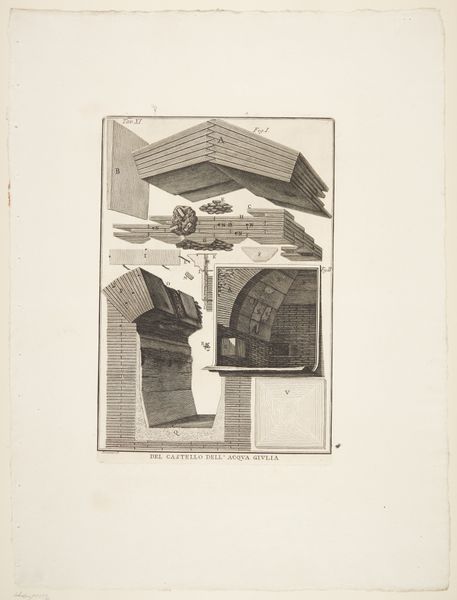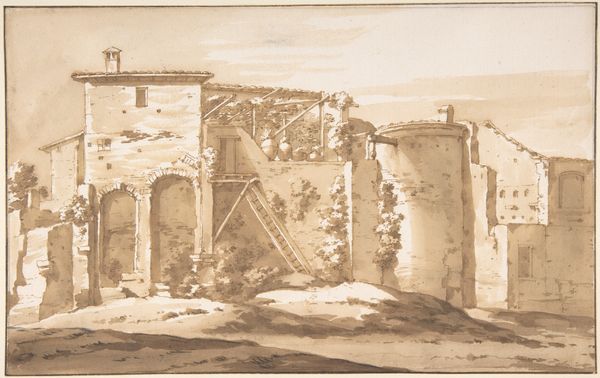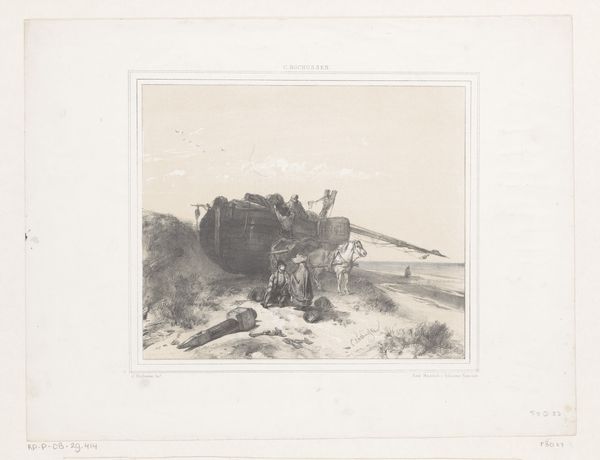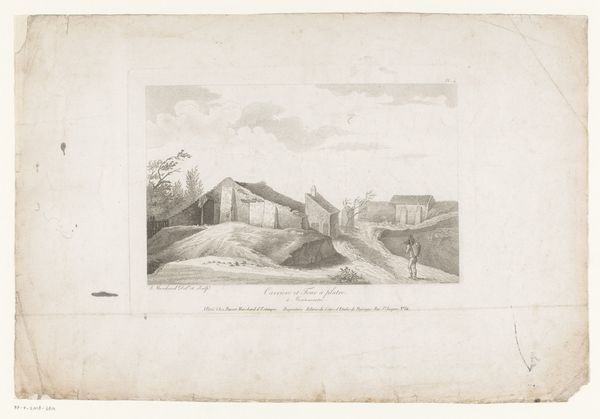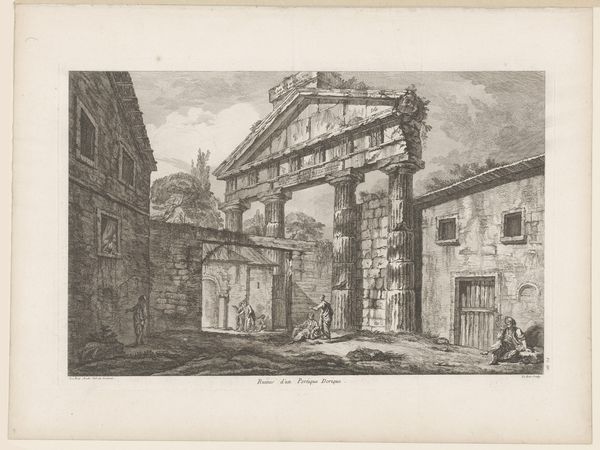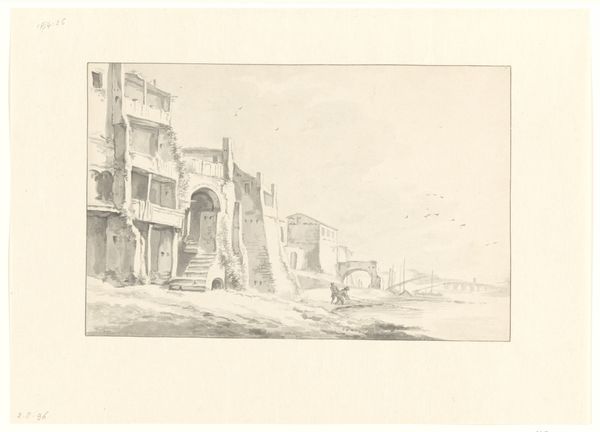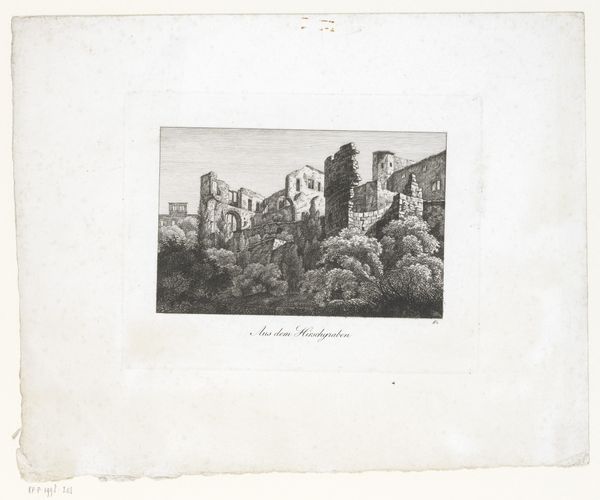
print, etching
#
baroque
# print
#
etching
#
landscape
#
house
#
cityscape
Dimensions: height 195 mm, width 215 mm
Copyright: Rijks Museum: Open Domain
Curator: Jacobus Schijnvoet's 1711 etching, titled "Gezicht op de ruïne Kasteel 't Zand bij Katwijk," presents us with a melancholic vista. What's your immediate impression? Editor: Well, ruins always get me thinking, don't they? There's something poetic, isn't there? A kind of haunting beauty. Here, you've got this structure half standing, like a faded memory refusing to fully disappear. The stark lines of the print only enhance that feel of a place and time slipped away. Curator: Precisely. This landscape invites a dialogue about the ephemeral nature of power. Castles were once symbols of authority and dominance. Here, the decay signifies not just the passage of time but perhaps a shift in social and political landscapes. What resonates for me is how the seemingly benign genre of landscape actually acts as a space to explore social and political ideas in early 18th-century Netherlands. Editor: See, and here's where it gets really juicy, like, did the artist feel a certain way about these societal changes or was he just vibing and thinking, "Ruin? Cool"? Maybe it's both. Maybe the etching style is what says it all, creating something precise and full of details, a detached snapshot, rather than anything overly dramatic, a quiet feeling about all this loss. Curator: It's crucial to consider that 18th-century Dutch society was undergoing significant transformation. The rise of a merchant class, shifts in colonial power dynamics... This image can be seen as a reflection on those very transitions. The inclusion of the laborers seems especially poignant when we analyze it as part of the shifting dynamics of the period. Editor: They're like tiny figures on a stage setting—hauling that wheelbarrow reminds me that new beginnings rise from these places even when we look back at this sort of decline. I kind of want to imagine all these guys hanging around centuries ago. Curator: That interweaving of personal experience with historical events highlights the continuing relevance of such artwork. It reveals this piece as more than just a scene. Editor: It’s the cycle, isn't it? History isn't frozen, it lives and breathes and keeps on flowing through artists, then etches and images… then people who look and see things that resonate. Very interesting.
Comments
No comments
Be the first to comment and join the conversation on the ultimate creative platform.

